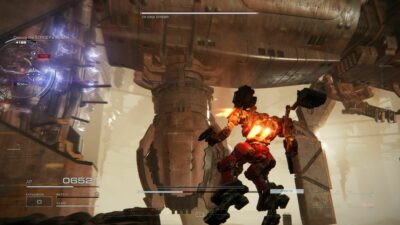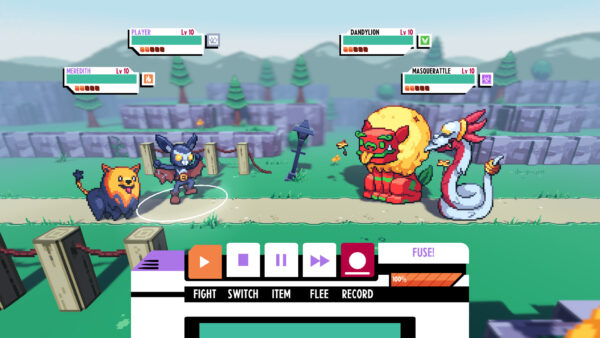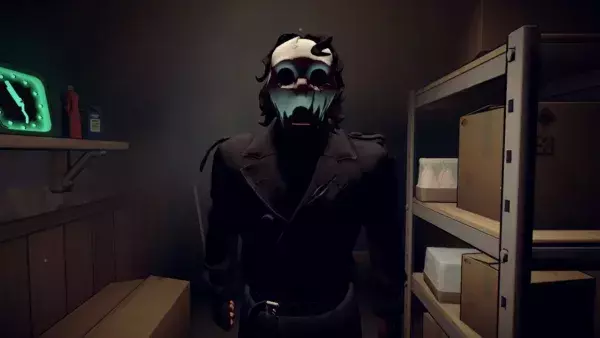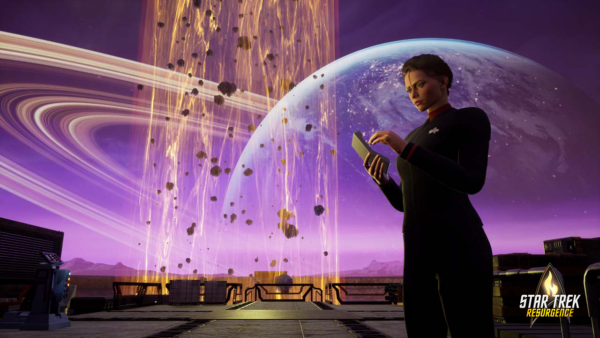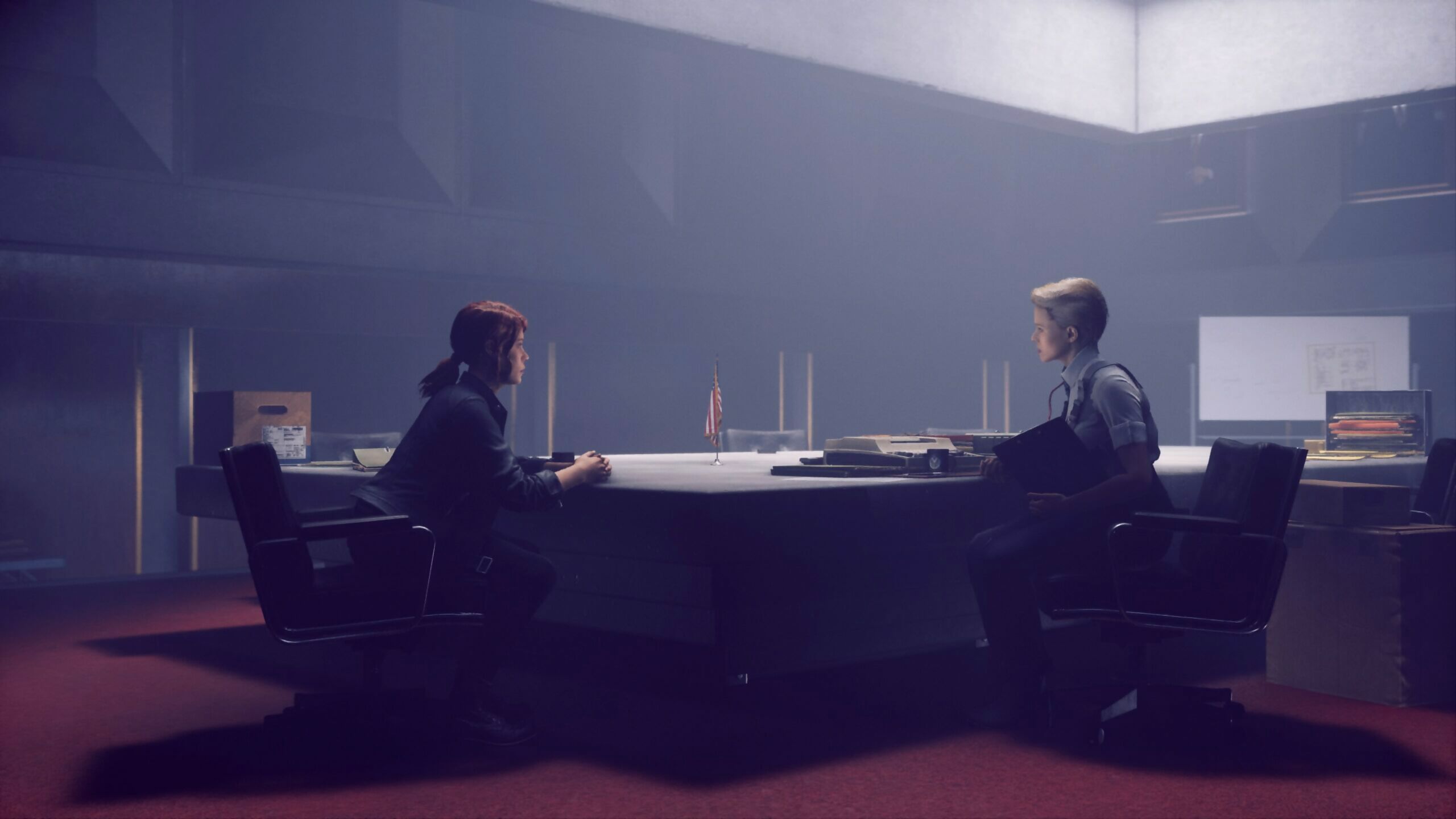
Remedy’s latest third-person action game provides just the right kind of insane. Here’s our review of Control…
Halfway through Control, protagonist Jesse Faden aptly describes the game with the following thought: “I am in an infinite building leading to different dimensions, and I never want to leave.”
That building is The Oldest House, which is home to secret government organisation, the Federal Bureau of Control. It’s a formidable, Brutalist Manhattan skyscraper, though in reality (or rather beyond reality), its interiors defy space and logic.
There’s a great atmosphere and abundance to Control’s world-building, as its seemingly ordinary offices introduce ever-stranger mysteries, and Remedy have fun indulging in Control’s New Weird literary influences.
It may do so in one of the most rote ways possible, ensuring there’s an endless trail of memos and correspondence to stop, pick up, and read (though why wouldn’t you find tons of paperwork in an office?), but the writing is also as funny as it is intriguing, and avid readers of the online SCP Foundation will enjoy gobbling all this up.
But as fascinating as The Oldest House is, bolstered by incredibly strong and creepy sound design that makes using headphones a must, once you peel back the mystery on the surface, it’s all in the service of a rather straightforward and underwhelming plot.
Jesse’s trying to find her brother Dylan, who was taken away by the Bureau when the two were just children. But on arriving at the Bureau, and unwittingly becoming its new director, you find that your obstacle to finding Dylan isn’t the FBC but rather a malevolent paranatural force dubbed the Hiss that’s suddenly invaded the Oldest House – naturally, you’ll be spending a good deal of your time putting them down.
With the shape-shifting gun you wield referred to as the Service Weapon, Control would like to pretend that it isn’t a third-person shooter, though it still mostly is. As well as shooting, though, you also unlock telekinetic powers – for flinging anything from office furniture to fragments of concrete from the walls – as well as the ability to dash, evade, raise debris as a shield, and even levitate. (The latter suffers from being just a bit too, well, floaty for traversal.)
Control isn’t a cover shooter, even though at times you’ll want to make sure you’re behind something as certain enemies have a knack of unexpectedly one-shotting you. Rather, the swarming movements of the Hiss, sometimes spawning from all sides, mean that you need to keep moving at all times.
When things click, it can be a thrill clearing a room, and there’s a comic novelty to pulling a distant object towards you and knocking out a nearby enemy; as you upgrade your skill tree, you’ll be able to not only fling back enemy grenades and rockets, but even turn weakened enemies into so much hurling fodder.
Yet combat doesn’t really evolve so much as set into a routine rhythm of unloading your Service Weapon’s ammo, before switching back to your psychic powers while you wait for the former to recharge, and then back to the Service Weapon as you wait for your psychic energy gauge to recharge – and expect to do that a fair bit when some encounters outstay their welcome.
Perhaps the most irritating part of this loop is that as you’re mostly fighting at a distance, the only way to regain health is from collecting blue crystals dropped by defeated Hiss, which then means rushing into harm’s way.
Then there’s the Hiss themselves. Although varied in weapons and skills, they aren’t particularly distinct from a visual standpoint. When taking longer than a second to identify your threat can often be fatal, you’re more likely to resort to instinctively firing or flinging whatever you’ve got and hoping for the best.
With much of the optional side stuff involving facing tougher Hiss – some which you’re clearly not meant to take on before you’ve upgraded your skills or reached the post-game – their presence ultimately determines how much of The Oldest House you want to explore. The randomly triggered, time-limited events that involve traipsing back to an earlier area are perhaps the most off-putting.
Not only are these encounters tougher than usual, but if you mess up and die, you instantly fail the mission and don’t get another shot until another one randomly triggers, which can feel like you’ve wasted your time getting sidetracked with nothing to show for it.
There were also reports of performance issues at launch, specifically on base PS4 and Xbox units, but even on a PS4 Pro, I ran into frame rate dips. It’s more egregious in the latter half when you’re dealing with more enemies and effects, though the game also has a habit of freezing just after you load up a checkpoint.
Control’s a conflicting result for Remedy. It’s undoubtedly their most confidently striking work for some time, yet I can’t help but think of The Board, the mysterious entity you encounter early in the game, and the strange and often baffling way it communicates with Jesse. Ultimately, you’re likely to come away from Control with similarly contradictory messages.
Highlight
The more you explore The Oldest House, the further it veers from Brutalist office architecture to more unusual and impossible environments such as the enormous Black Rock Quarry, which looks like the place where the monoliths from 2001: A Space Odyssey were made. By far the standout is the Ashtray Maze. No spoilers, but you’ll want to crank the volume up.
Verdict: 70%
Control surprisingly makes the ordinary weird, only to make the fascinating mundane.
Genre: Action-adventure
Format: PS4 (tested) / XBO / PC
Developer: Remedy
Publisher: 505 Games
Price: £49.99
Release: Out now


